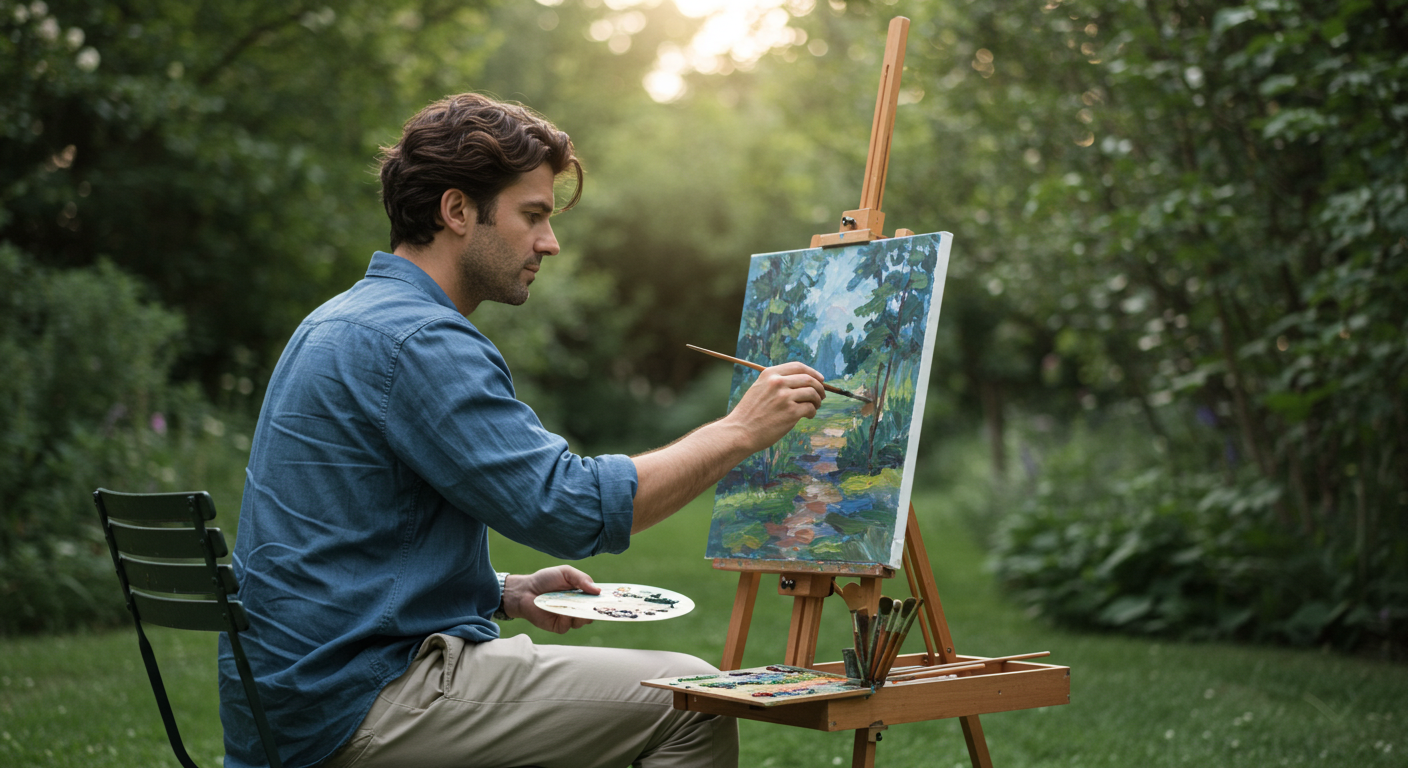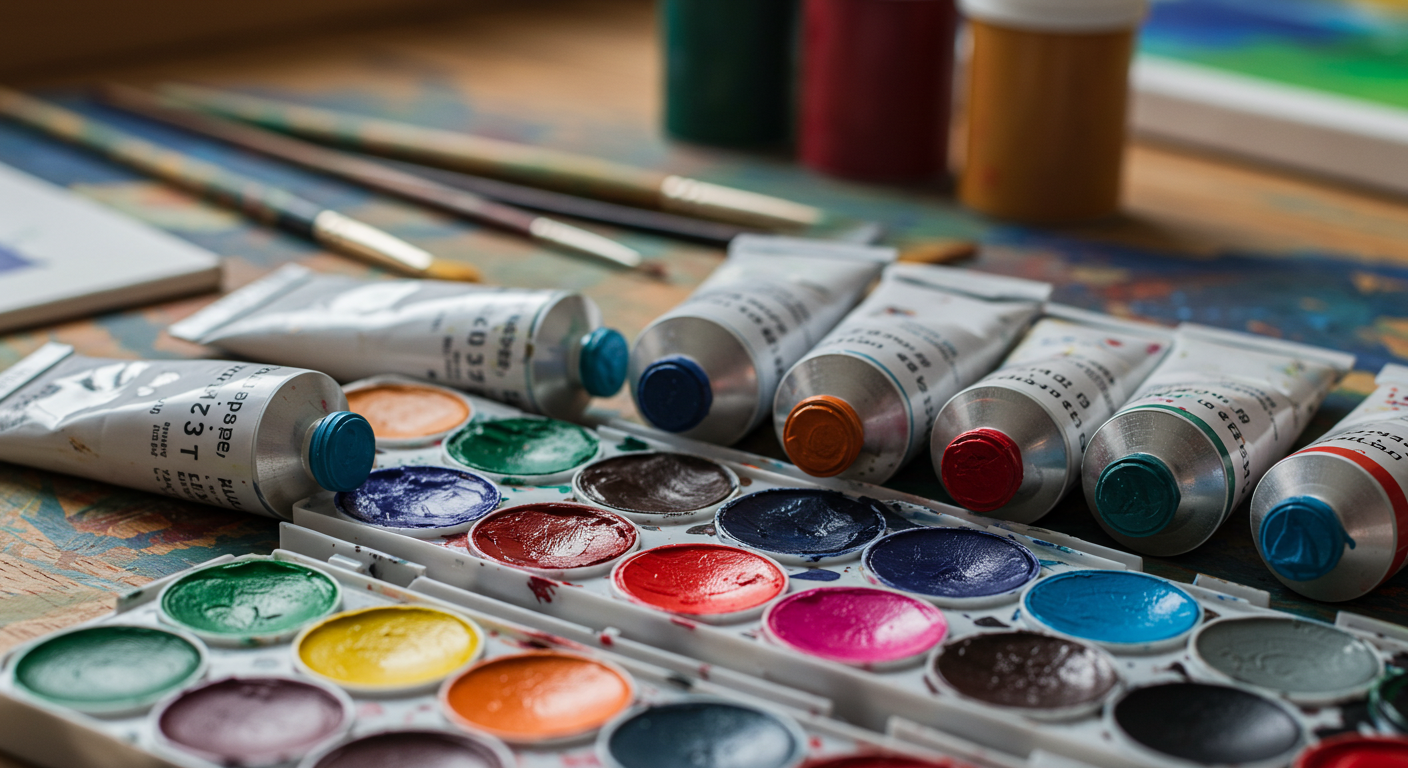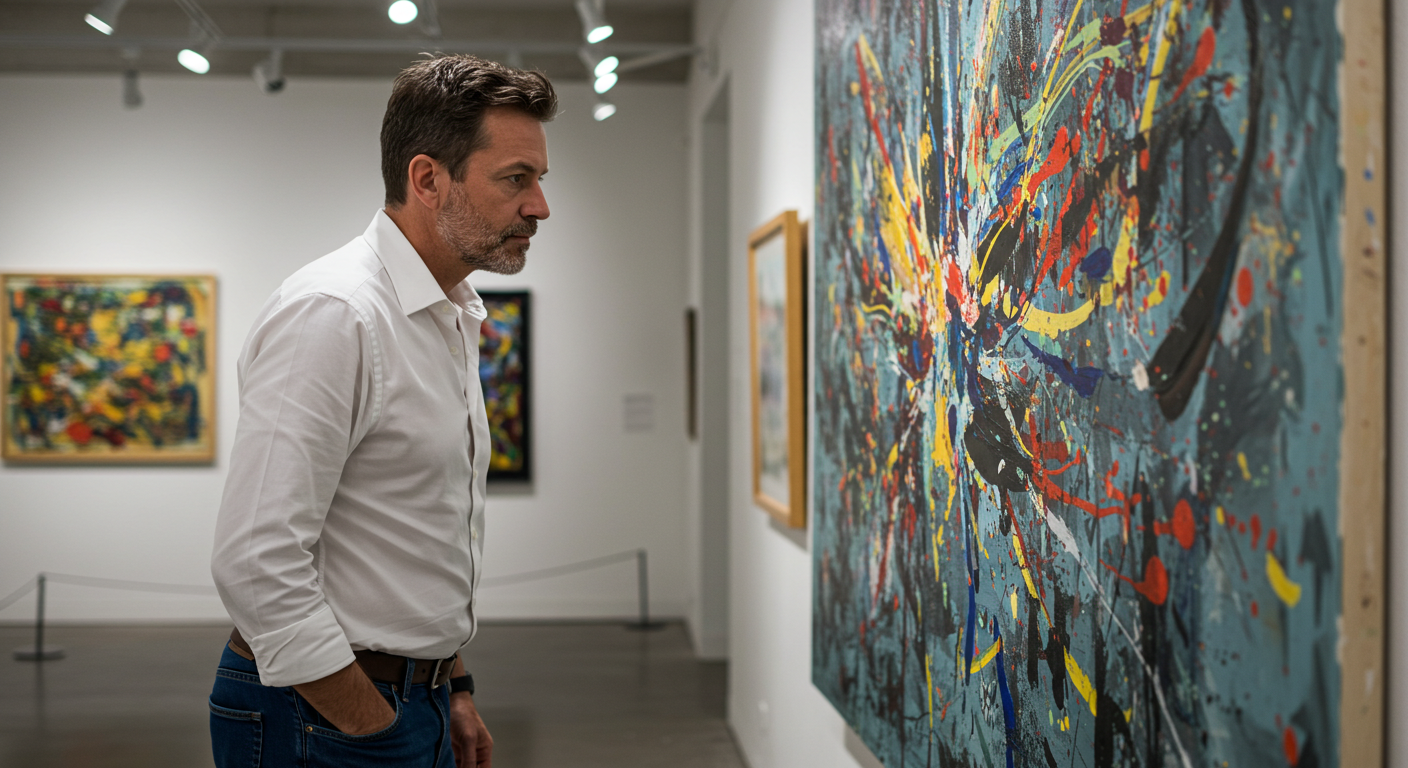Art as Therapy: How Painting Helps to Relieve Stress and Develop Creativity

Why people turn to art in times of crisis
In a world where every day brings new challenges, stress has become an inevitable part of life. Workload, family responsibilities, social crises, and even global events affect our emotional state. In search of harmony and inner balance, many people turn to art.
Painting as an accessible tool for self-help
Painting is one of the most accessible and powerful tools for self-help. It does not require special education or unique talent: all you need is a brush, paints, and a canvas or sheet of paper. In the process of painting, a person can express emotions, release anxiety, and find new resources for personal growth.
This is why today more and more people talk about art therapy — a method of psychological support through creativity.
Why Painting Helps Relieve Stress
Mechanisms of reducing anxiety and shifting focus
When we paint, areas of the brain responsible for relaxation and concentration are activated. Monotonous brush movements, working with colors and shapes, create a meditative effect.
What actually works: three key effects
- Reduced anxiety. Focusing on colors and composition shifts attention from problems to the process itself.
- Physical relaxation. Muscles gradually release tension, breathing becomes more even.
- Emotional release. A painting can express what is difficult to put into words.
For many, painting becomes a safe space to release negativity without harming themselves or others.
Psychological Effects of Creativity: From Relaxation to Self-Expression
Relaxation as a form of meditation
Painting has a therapeutic effect thanks to a combination of several factors.
- Relaxation. The process of painting can be compared to yoga or meditation. It helps to disconnect from intrusive thoughts.
- Self-expression. A painting becomes a mirror of the inner world. Even abstract strokes can reveal more than words.
- Confidence boost. Every finished piece is a small victory that strengthens self-esteem.
- Emotional stability. Many note that after painting, anxiety decreases and mood improves.

Color Therapy: How Colors Affect Mood and Emotions
Soothing shades and harmony
- Blue — calms, reduces stress, helps focus.
- Green — associated with nature and harmony, promotes relaxation.
Colors that bring energy
- Yellow — stimulates joy and optimism, gives energy.
- Red — increases activity, but in excess may cause irritation.
- Purple — helps connect with the inner world.
When choosing a palette, people intuitively select what matches their emotional state, and through colors they adjust their emotions.
Center for packaging valuable and fragile items in Ukraine – https://packingcentre.com.ua/
Painting as a Way to Develop Creativity and Out-of-the-Box Thinking
The skill of finding unconventional solutions
- finding new solutions;
- thinking outside the box;
- experimenting without fear of mistakes.
Studies show that people who practice painting adapt more easily to changes and find original solutions to complex situations. This quality is useful not only for artists but also for entrepreneurs, managers, teachers, and other professionals.

Therapy for Body and Soul: The Link Between Art and Health
Physiological effects of creativity
- blood pressure decreases while painting;
- heart rate normalizes;
- respiratory system improves.
Long-term benefits for the nervous system
Moreover, regular artistic activity strengthens the nervous system and helps the body recover faster after illness. Thus, painting is therapy for both body and soul.
Art Therapy in Times of Crisis and War: A Special Role for Ukrainians
Support for adults and families
For Ukraine, the topic of art therapy has gained special relevance. In wartime, stress, anxiety, and psychological pressure affect almost everyone.
Helping children and volunteers
- coping with post-traumatic stress;
- helping children adapt to new conditions;
- supporting psychologists and volunteers who also need recovery.
Many centers and organizations in Ukraine are implementing art therapy as part of comprehensive support programs. This helps people not only survive a crisis but also maintain inner resilience.
Individual and Group Sessions: What to Choose
When individual practice is better
- Individual sessions. Suitable for those who want to deeply work through personal experiences. They are held with a psychologist or at home.
Advantages of group practice
- Group sessions. These promote socialization, communication, and a sense of support. Especially helpful for children and teenagers.
The choice depends on personal goals. Some combine both formats for maximum effect.
Practical Techniques: How to Start Painting to Relieve Stress
Simple methods for beginners
- Free strokes. Take a brush and draw lines, circles, and patterns without purpose. This is relaxing.
- Painting emotions. Try to express your mood with colors and shapes: anxiety, joy, fatigue.
- Mandalas. Creating symmetrical patterns helps focus and calm down.
- Collages. Use paints, pencils, or even magazine cutouts.
- Painting to music. Let sounds guide your brush movements.
The main rule: focus on process, not result
The key is not to think about the result. Art therapy works when you are focused on the process itself.
Examples of Successful Art Therapy Around the World
USA and UK
- In the USA, art therapy is used with veterans and people with PTSD.
- In the UK, art therapy programs are integrated into the healthcare system.
Japan and Israel
- In Japan, painting is used to relieve professional stress among office workers.
- In Israel, art therapy supports children who have experienced war conflicts.
These examples confirm: art works as a universal language of healing.
Tips from Psychologists and Art Therapists: Bringing Painting into Everyday Life
How to set up a creative space
- Dedicate at least 20–30 minutes per week to painting.
- Create a cozy space: desk, lamp, set of paints and brushes.
Routine and materials
- Do not set the goal of creating a “masterpiece.” The process matters, not the result.
- Use different materials — watercolor, gouache, pastels. This helps find new ways of self-expression.
- Sign up for workshops or online classes to broaden your horizons and inspiration.
Conclusion: Art as a Path to Harmony and Inner Resilience
Why you should start today
Painting is not only creativity but also a powerful tool for restoring emotional balance. It helps reduce stress, develop creativity, improve health, and find support in difficult times.
In times of uncertainty, art becomes a reliable source of inner strength. Art therapy is available to everyone — no special skills are needed, just willingness and openness to the process.
Start painting today, and you will see: a brush and paints can bring harmony, inspiration, and resilience to face any challenge.
Call us and we will consult you: +380632478102.
Write to us on Telegram
Write to us on Viber
Reliable packaging and delivery of fragile and valuable items abroad – https://wellpack.com.ua/
